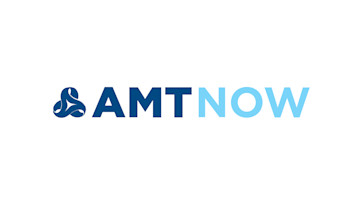TECHNOLOGY
What's Clearer Than Dollar Signs?
Technology and economics are intertwined, and a company’s interest in new technologies often depends on if it allows them to make more of something, make something more efficiently, or make something more valuable. This return on investment is a common way to assess the viability of technology implementation. Other common factors to consider are maintenance, upgrades, and end-of-life replacements. A few often-overlooked liabilities are the cost of security and opportunity cost of depreciated/obsolete technology. These days, the industry is changing its financial model of equipment to increase visibility of value and improve upkeep. This transparency of financial risk will enable manufacturers to better formulate their investment strategy. While some say, "If it ain't broke, don't fix it," maybe it should be: "If it ain't current, it's broke."
INTELLIGENCE
An Economic Balancing Act
The U.S. economy currently hangs in a delicate balance. The Federal Reserve’s stringent monetary policy, aimed at controlling inflation, is designed to slow down economic momentum, raising concerns over increasing unemployment – a key indicator of a potential recession. An increase in unemployment can lead to reduced consumer spending, lowering demand across various sectors and heightening recession risks.
However, a recent Wall Street Journal survey showed slight optimism, as experts reduced the immediate recession probabilities from 54% to 48%. This subtle but positive shift hints at a somewhat improved economic outlook, aligning with the sentiments expressed by economists at AMT’s MTForecast conference, which was held in early October in Detroit. They predicted a likely but shallow recession in the early part of 2024, but one of the firms has subsequently revised, taking recession out of their base case. The predominant challenge involves fine-tuning monetary policies to reduce inflation to the Fed’s targeted 2% without tipping the economy completely on its head and instead guiding it toward the sought-after soft landing.
SMARTFORCE
Stay in the Loop: The Smartforce Student Summit Coming Soon to Your Inbox
Save the date! The highly anticipated Smartforce Student Summit, co-sponsored by AMT and Tooling U-SME, will take center stage inside Level 2 of the East Building of McCormick Place at IMTS on Sept. 9-14, 2024, continuing its 25-year history of delivering memorable experiences that inspire thousands of students to pursue manufacturing careers.
Now MT Magazine readers can keep up with the nation’s foremost event for MT education by visiting IMTS.com/smartforce to join our email list. Or follow us at @IMTS_Smartforce on Instagram and Twitter to get the latest news, receive exclusive previews of student-friendly exhibits, and catch up on the Smartforce Blog featuring all things workforce and education, alongside updates from student robotics clubs nationwide.
Want to get involved with the 2024 Smartforce Student Summit? Contact Catherine “Cat” Ross, AMT’s director of community engagement, at cross@AMTonline.org.
ADVOCACY
Spending Fight Impacts Manufacturers
President Joe Biden signed a bipartisan spending bill that will fund the government at current levels until early next year. The “laddered” continuing resolution, an unusual approach from newly minted House Speaker Mike Johnson, R-La., funds four departments and related agencies through Jan. 19 and the remaining eight through February. The intent is for the two deadlines to allow sufficient time to complete all 12 of the individual appropriations bills despite significant disagreement between and within parties on funding amounts.
The timing of the funding plan has implications for manufacturers because it influences prospects for a year-end tax package that could include important tax changes. Lawmakers from both parties and chambers have been working on a deal that would extend 100% bonus depreciation, restore expensing for R&D costs, and provide relief on business interest deductions. Attaching a tax bill to the spending package is no longer an option. However, the January and February deadlines for the 12 must-pass funding bills provide additional opportunities to get tax relief for manufacturers over the finish line.
INTERNATIONAL
Manufacturing Innovation Fuels Economies
Global economics and manufacturing are tightly interwoven. Manufacturing plays a crucial role in the economic landscape affecting a country's GDP, trade balance, infrastructure development, innovation, and overall economic strength. At the heart of this is innovation, which can catalyze economic development.
The infusion of cutting-edge technologies and methodologies into industry propels efficiency and productivity. Streamlined processes, from automation to data analytics, increase output while minimizing costs. Job markets evolve, demanding a skilled workforce. This dynamic shift not only fuels employment but also cultivates expertise, positioning the workforce as a global asset attracting foreign direct investment.
Moreover, innovative manufacturing has a ripple effect across other sectors, triggering advancements in logistics, research, and development. Technologically advanced products enhance global competitiveness, leading to exports and a better trade balance. Jobs, GDP, trade, economic strength: It’s all tied into manufacturing, so be proud.
To read the rest of the Economics Issue of MT Magazine, click here.






